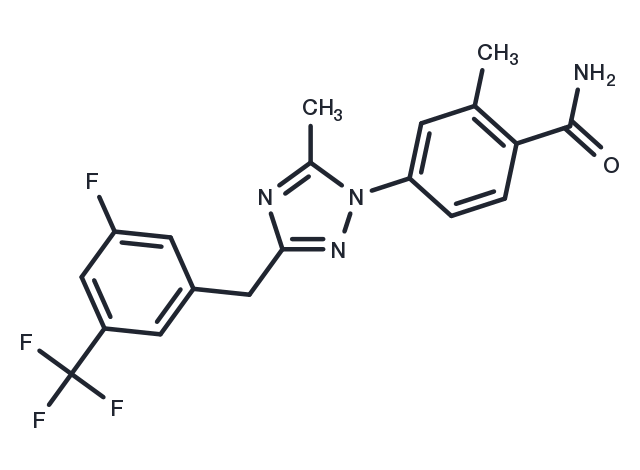Powder: -20°C for 3 years | In solvent: -80°C for 1 year


FTBMT is a selective GPR52 agonist (EC50: 75 nM) and it also has antipsychotic and procognitive properties.

| Pack Size | Availability | Price/USD | Quantity |
|---|---|---|---|
| 1 mg | In stock | $ 50.00 | |
| 5 mg | In stock | $ 86.00 | |
| 10 mg | In stock | $ 148.00 | |
| 25 mg | In stock | $ 329.00 | |
| 50 mg | In stock | $ 581.00 | |
| 100 mg | In stock | $ 829.00 | |
| 1 mL * 10 mM (in DMSO) | In stock | $ 94.00 |


| Description | FTBMT is a selective GPR52 agonist (EC50: 75 nM) and it also has antipsychotic and procognitive properties. |
| Targets&IC50 | GPR52:75 nM(EC50) |
| In vitro | In CHO cells expressing human, mouse, or rat GPR52, FTBMT (0.1-10 μM) improves intracellular cAMP levels (pEC50s of 7.03, 6.85, and 6.87, respectively)[2]. |
| In vivo | In rats, FTBMT (3 or 10 mg/kg, 48 hours) improves recognition and spatial working memory. FTBMT (30 mg/kg, 90 minutes) shows antipsychotic-like activity without causing catalepsy in mice[2] |
| Molecular Weight | 392.35 |
| Formula | C19H16F4N4O |
| CAS No. | 1358575-02-6 |
Powder: -20°C for 3 years | In solvent: -80°C for 1 year
DMSO: 45 mg/mL (114.69 mM), Sonification is recommended.
H2O: < 0.1 mg/mL (insoluble)
You can also refer to dose conversion for different animals. More
bottom
Please see Inhibitor Handling Instructions for more frequently ask questions. Topics include: how to prepare stock solutions, how to store products, and cautions on cell-based assays & animal experiments, etc.
FTBMT 1358575-02-6 Endocrinology/Hormones GPCR/G Protein GPR inhibit Inhibitor inhibitor
